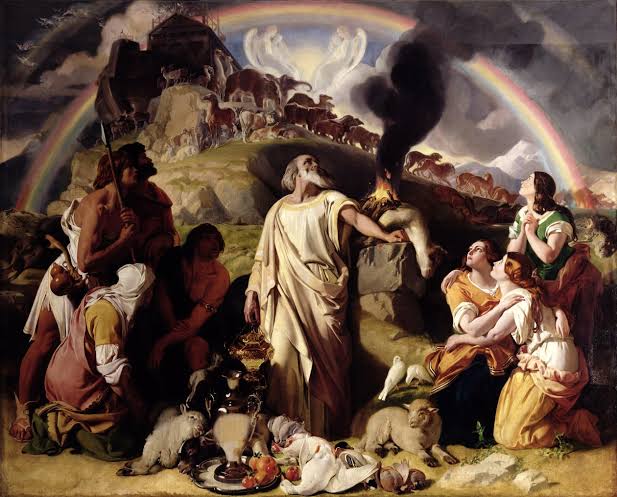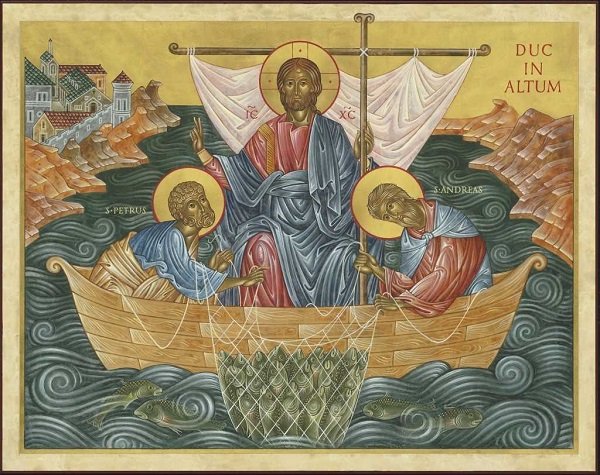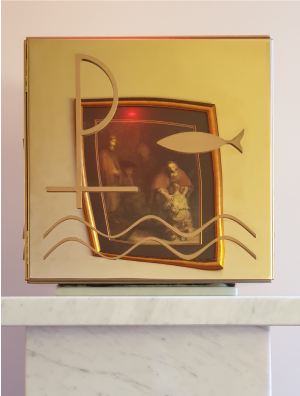The book of Leviticus can feel like a daunting read for modern Christians. Its pages are filled with meticulous instructions—specific types of animals to sacrifice, exact measurements for altars, precise ways to handle blood, and even rules about which parts of an offering must be burned. At first glance, it all seems excessive. If Jesus was going to fulfil and surpass these rituals with His perfect sacrifice, why did God insist on such intricate laws in the first place? Was it all just a temporary setup destined to be scrapped?
The answer lies in understanding that God’s attention to detail wasn’t arbitrary. Every regulation in Leviticus served a purpose—revealing His holiness, preparing His people for redemption, and pointing forward to Christ in ways that would have been unmistakable to those with eyes to see.
A Holy God Demands Reverent Worship
When we ask why God cared so much about the specifics—whether it was the kind of animal offered or the way its blood was sprinkled—we must first grasp who God is. The Lord is not just another deity in a pantheon of gods; He is utterly holy, completely set apart from sin and imperfection. The tabernacle, where these sacrifices took place, was His dwelling place among Israel. Approaching Him carelessly was not just disrespectful—it was deadly, as seen when Nadab and Abihu offered “unauthorised fire” and were consumed (Leviticus 10:1-3).
The precision of Levitical law was a constant reminder that God cannot be approached on human terms. Unlike pagan religions, where rituals were often invented or adapted to suit cultural preferences, Israel’s worship was dictated entirely by God. The details ensured that every sacrifice was offered His way, reinforcing that forgiveness and communion with Him were gifts of grace, not something man could control or manipulate.
Every Ritual Pointed to Christ
Though these laws might seem rigid or even strange to us today, they were rich with prophetic meaning. Each element of the sacrificial system was a shadow of what Christ would accomplish on the cross. Consider the unblemished lamb required for offerings (Leviticus 1:3)—a foreshadowing of Jesus, the sinless “Lamb of God” (John 1:29). The blood applied to the altar (Leviticus 4:25) pointed to Christ’s blood, which truly atones for sin (Hebrews 9:12). Even the scapegoat, sent away into the wilderness bearing Israel’s sins (Leviticus 16:21-22), was a vivid picture of Jesus taking our guilt “outside the camp” (Hebrews 13:12).
The sheer repetition of sacrifices—daily, weekly, yearly—hammered home a crucial truth: no animal could permanently take away sin (Hebrews 10:4). The system was designed to create a longing for something greater, a perfect High Priest who would offer Himself once for all (Hebrews 7:27).
Guarding Against Idolatry
Another reason for the strict regulations was to keep Israel distinct from the pagan nations around them. Ancient Near Eastern religions had their own sacrifices, but they were often mixed with immoral practices—child sacrifice, ritual prostitution, and idolatrous feasts. By giving Israel such exact instructions, God prevented them from blending true worship with false religion.
For example, the prohibition against boiling a young goat in its mother’s milk (Exodus 23:19) may seem odd, but it likely countered a Canaanite fertility rite. The ban on eating blood (Leviticus 17:10-12) set Israel apart from cultures that believed consuming blood granted power. Even the design of the tabernacle—its materials, its layout—was a deliberate contrast to Egyptian and Babylonian temples. Every detail reinforced: “You are Mine, and your worship must reflect My holiness, not the world’s corruption.”
Training in Faithful Obedience
Beyond their symbolic meaning, the laws of Leviticus were a training ground for faith. God didn’t just want mindless ritual; He wanted hearts that trusted and obeyed Him—even when the reasons weren’t fully understood. Why specify the dimensions of the altar or the type of grain for an offering? Because true worship requires submission.
Imagine a parent teaching a child: “Always look both ways before crossing the street.” The child may not grasp the danger of traffic, but obedience protects them. In the same way, God’s detailed commands taught Israel to rely on His wisdom, not their own. Over time, this discipline would prepare them to recognise the Messiah when He came—though sadly, many later clung to the rituals while missing their true purpose (Matthew 23:23).
From Shadows to Substance in Christ
When Jesus died on the cross, the temple veil tore in two (Matthew 27:51), symbolising that the old system had fulfilled its purpose. The endless sacrifices were over because the final Lamb had been slain. The dietary laws (Mark 7:19), the temple rituals (John 4:21-24), the priesthood (Hebrews 7:12)—all were fulfilled in Him.
Yet this doesn’t mean Leviticus was pointless. Just as a teacher uses diagrams to explain a complex concept before revealing the full picture, God used the sacrificial system to teach humanity about sin, atonement, and redemption. The details weren’t random; they were part of a grand story that climaxed at Calvary.
The Elevation Offering: A Foreshadowing of the Cross
Embedded within the intricate worship rituals of ancient Israel lay a profound physical prophecy of Christ’s redemptive work. The elevation offerings – both the wave offering (tenufah) and heave offering (terumah) – contained a theological depth that only becomes fully clear in light of the Cross. These were not merely ceremonial gestures, but embodied prayers that traced the very shape of salvation history.
The wave offering’s horizontal motion, where the priest would move the sacrifice side to side before the Lord, spoke of reconciliation and communion. Typically involving the breast portion of the peace offering, this lateral movement prophetically enacted Christ’s outstretched arms on the Cross, bridging the gap between heaven and earth. Just as the wave offering signified peace with God, so Christ became our peace, breaking down the dividing wall of hostility (Ephesians 2:14).
Complementing this horizontal dimension was the vertical movement of the heave offering. When the priest lifted the sacrifice upward – often the right thigh or shoulder portion – this ascendant gesture pointed toward resurrection and access to the Father. The upward motion finds its fulfillment in Christ’s victory over death and His glorious ascension, where He entered the heavenly sanctuary on our behalf (Hebrews 9:24).
Together, these two sacred motions formed a cross-shaped pattern of worship centuries before Golgotha. The early Church immediately recognized this connection – Justin Martyr saw in Isaiah’s suffering servant with outstretched arms a prefiguring of the Cross, while the Didache connected the scattered bread of wave offerings to the Church gathered in Christ.
This prophetic symbolism continues in the Eucharist today. When the priest elevates the Host, he re-presents both dimensions of Christ’s one perfect sacrifice – the horizontal paten and chalice lifted during the doxology (“Through Him, with Him, in Him”), and the vertical elevation at the consecration proclaiming Christ’s resurrection and ascension. What the Levitical priests enacted in symbol, the Church now celebrates in reality – the full, final sacrifice that both reconciles and raises us to new life.
The meticulous detail of these ancient rituals reveals God’s masterful foresight. Every ceremonial motion, every prescribed gesture contained hidden meaning. In the up-and-down and side-to-side movements of Israel’s worship, we find the gospel written in flesh and blood before the Word became flesh. The elevation offerings were physical prophecies, their very motions tracing the sign of the Cross over Israel long before the world knew its saving power.
What Does This Mean for Us Today?
We no longer offer animal sacrifices or worry about ceremonial cleanliness, but Leviticus still teaches us vital truths:
- God is holy, and sin is serious. The bloodshed in Leviticus reminds us that forgiveness is costly—not because God is cruel, but because He is just.
- Worship must be on God’s terms. Whether in ancient Israel or modern churches, we don’t get to redefine how we approach Him.
- Christ is the fulfilment of every symbol. When we read Leviticus, we should see Jesus in every sacrifice, every priestly act, every drop of blood.
The next time Leviticus feels tedious, remember: those intricate laws were God’s way of writing the gospel in advance. Every detail mattered—because every detail pointed to Him.



